The Origin of Figs
The fig is an old fruit steeped in mythology, folklore and biblical references. It predates 5000BC and can now be found growing in almost every part of the world. There are 1000’s of varieties and it is impossible to try them all, but true fig lovers are very likely to attempt to add as many appealing varieties as possible to a prized fig collection.
There is a debate about the origins of figs. It is believed they have spread from Asia to the Mediterranean but it has also been said that figs can be Adriatic or mountainous (Mount Edna) in lineage. There is a lot of genetic testing being done to update what we know about the origins of fig trees.
However, Adriatic figs are normally coastal with less cold tolerance than the mountain types. They tend to be green or yellow with strawberry interiors. They are normally thin-skinned and self-pollinating. Mountain figs are more cold- tolerant and fast ripening to accommodate the shorter growing seasons of cooler regions.
This post will explain the different types of figs and some of the flavor profiles.
The 4 Types Of Figs
Capri Figs– These only produce male flowers and the only purpose is to pollinate females.
Smyrna Figs– This type only produces female flowers and must be pollinated by a capri fig.
San Pedros– San Pedros bear two crops of figs. One is on leafless mature wood, that requires no pollination. The second or main crop is on new wood that requires pollination by a male flower for edible fruit. Fig collectors are likely to have a few San Pedro types in their collection. Desert King is a more common variety of a San Pedro type fig.
Common Fig– Common figs do not need any pollination and are the type we are most likely to grow in our backyards and gardens. Common figs will sometimes bear two crops of figs. The first crop is borne in early spring on last year’s growth and is called the breba crop. The second crop is born on new growth and is the main crop. The breba crop may be heavy or light and is not always consistent with the shape of the main crop
The Fig Wasp- Myths and Truths
- Truth– The fig is an inverted flower and the insides are pollinated by a particular wasp. We are essentially eating a flower, rather than a fruit.
- Myth– Figs all contain fig wasp larvae. The truth is, so far the fig wasp has not been observed in Arizona. It is, however, present in many other desert regions around the world.
Fig Flavor Groups
There are several main fig flavor groups noted. This may differ according to different sources. A good guide is that the fig pulp color will typically match the flavor profile.
Sugar: Sugar figs have an amber to brown colored pulp and various dark skins. This group of figs is slightly sweet to very sweet. They can be reminiscent of maple or brown sugar. They often lack any other complex flavors. Example, Brown Turkey.
Honey: Honeyed varieties have a golden pulp with light skins, usually yellow. This group is honey sweet with a light to a very rich and creamy flavor. Example Kadota, LSU Gold.
Berry: Berry types have red to purple pulps and the skins can be light or dark. They are very flavorful and complex. The main berry flavor is strawberry. The berry types are further divided as follows:
- Adriatic Berry: Sugary-sweet with berry flavor. They have a yellow or green skin and usually a red pulp. There is an intense berry flavor and possibly the presence of spice. Example, Tiger Panache.
- Dark Berry: This is a very popular group of mildly sweet to very sweet. There is some degree of berry flavor and some acidity present. Example, Ischia Black
- Bordeaux Berry: Sweet with jammy interiors. The presence of musk, strawberry, grape, strawberry punch or resin. Example, Violette De Bordeaux.
- Exotic Berry: This is possibly a new group consideration. It has flavors that range from tropical, to citrus, apple, and mango. Example, Black Madeira.
Here is a list of common figs explaining their flavors and some characteristics.
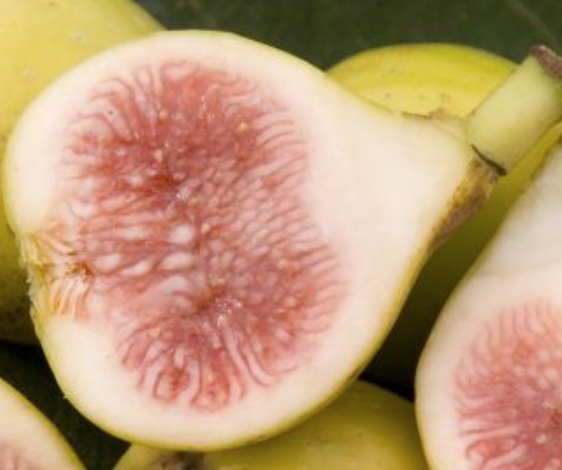
Peter's Honey Fig- Honey Type
As the name suggests this is a honey type of fig. It originates in Sicily and grows to about 25 ft. tall. It has a yellow to green exterior with a sweet dark amber-colored flesh. It has a good crunch and two edible crops. The skin can be quite thick. It can be grown in a container.
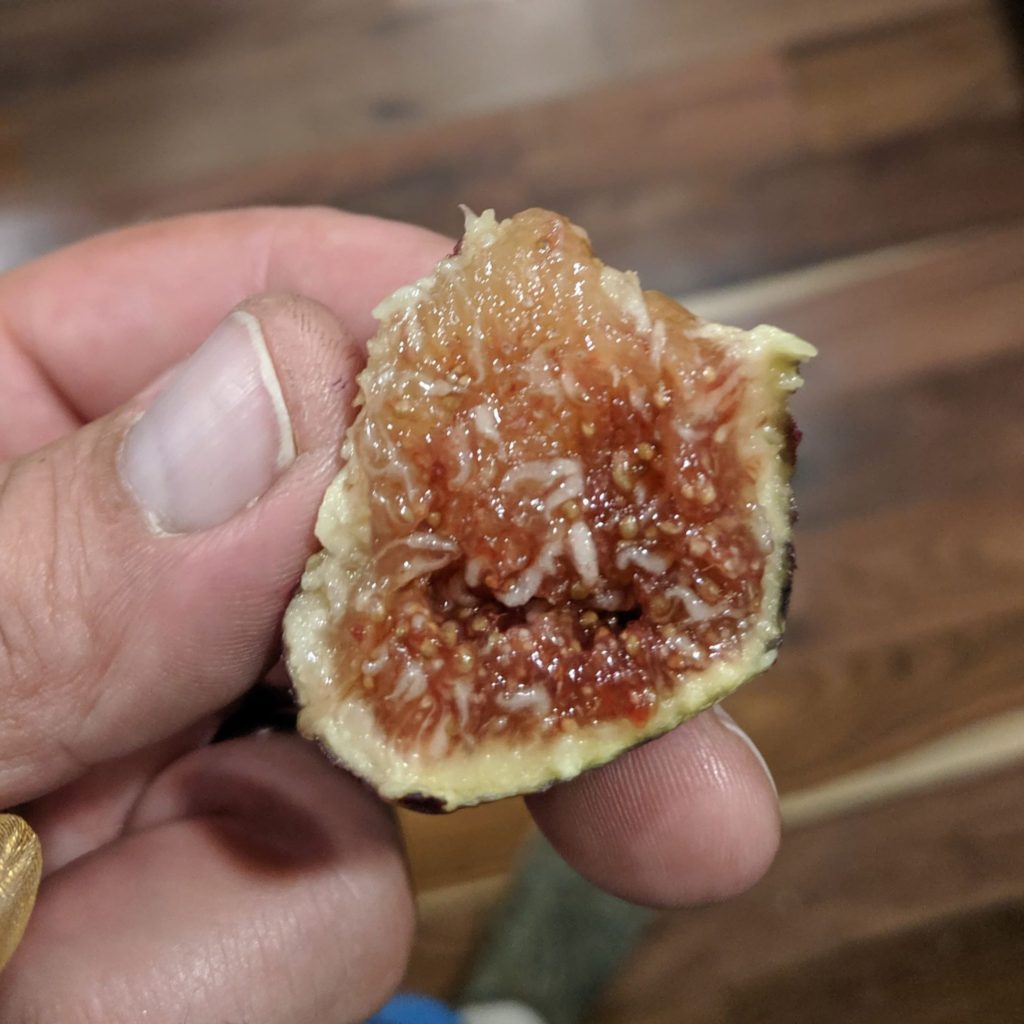
Italian Everbearing- Sugar type
This is a large-sized fruit with a reddish-brown exterior with a sweet pink flesh. It resembles a Brown Turkey fig but is larger and darker in color. It has a strong dense bush-type growth and is best grown in-ground. It produced a breba and main crop.
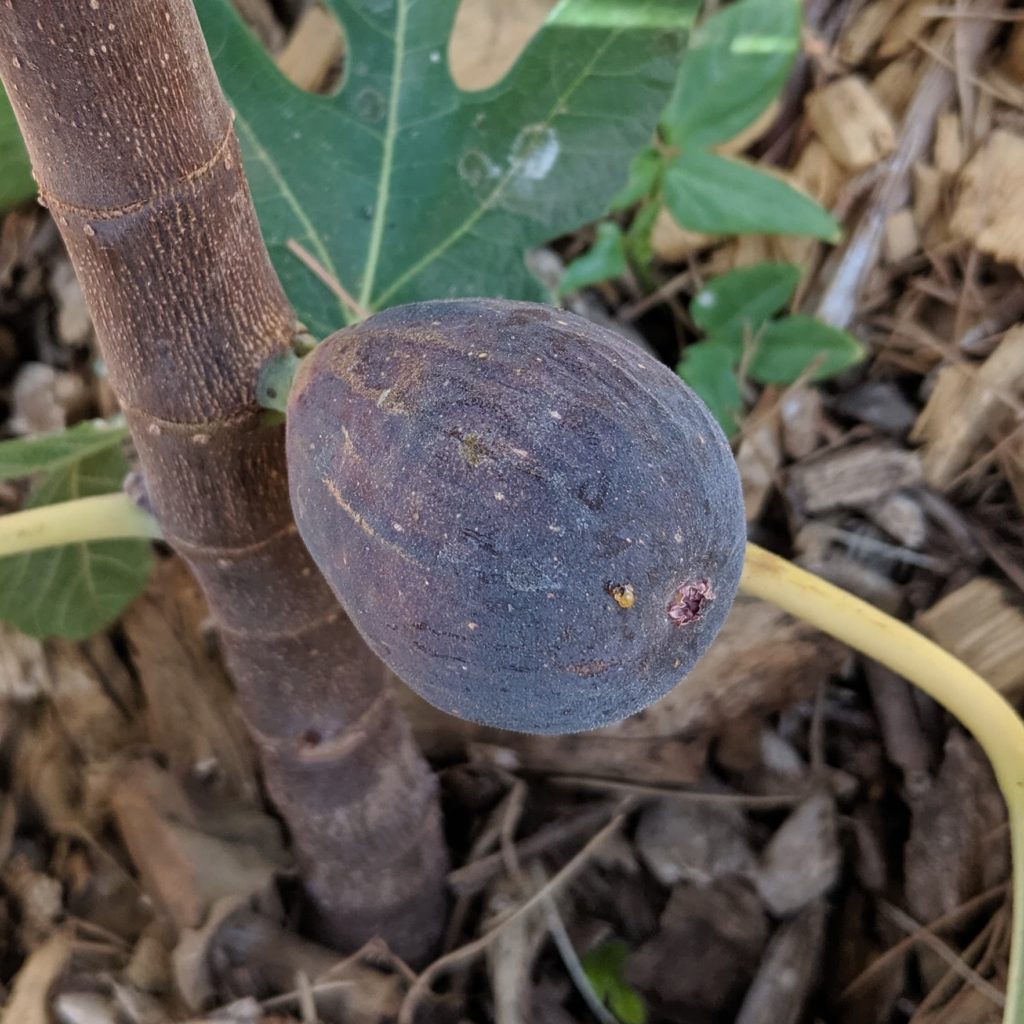
Black Mission- Sugar type
This is one of the most available fig varieties in the world and is said to have originated in the Balearic Islands. It was once known as the Fransciscana as it became the preferred fig of the Catholic missions. It also became the variety preferred for the fig industry in California and the new name became Black Mission. The fruit is medium with a deep black-purple exterior and light pinkish interior. They are heavily seeded with a nice crunch producing two edible crops. These are very large trees and best planted in-ground where there is ample space.
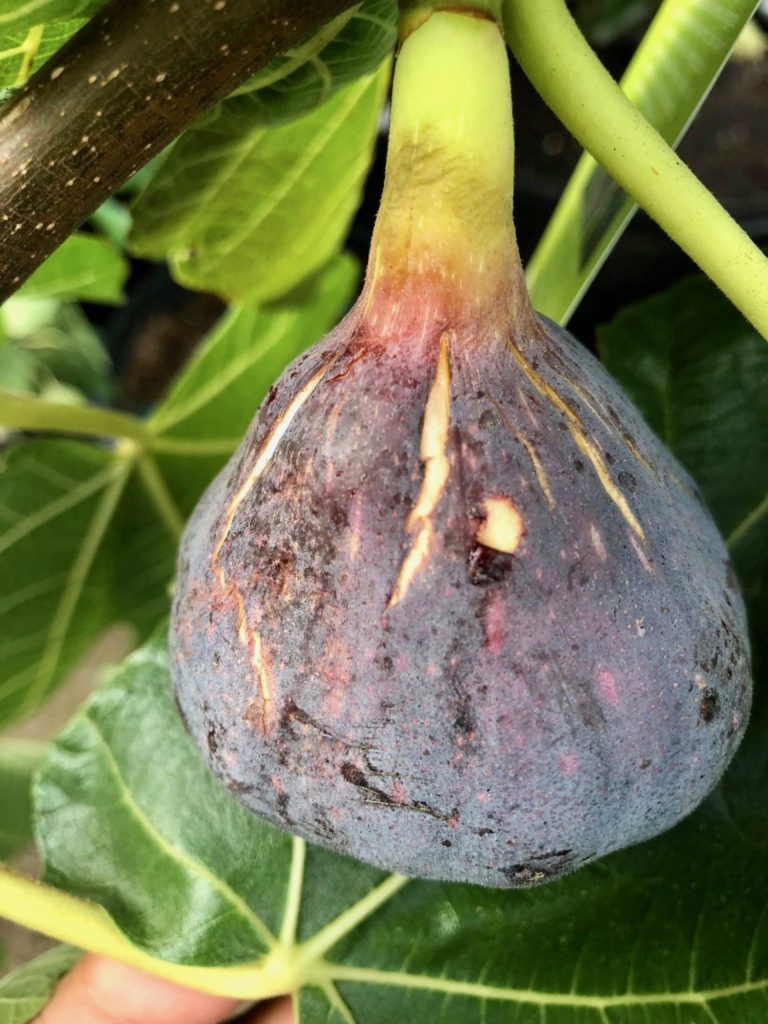
Brown TURKEY-sUGAR type
Medium-sized dark rusty red fruit with an amber interior. This is a large prolific tree best planted in-ground. It is a much more mellow tasting fig and serious collectors prefer using it as a tree to graft on.
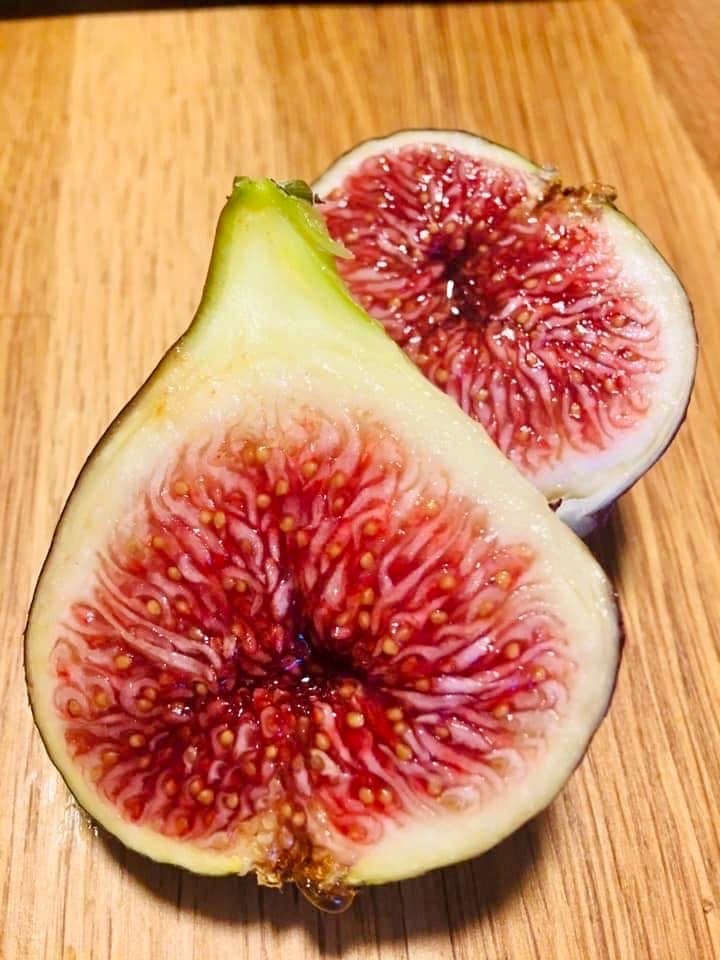
BLACK MADEIRA- BERRY type
Often referred to as the best tasting fig there is! Black Madeira is a slow grower but very worth the wait. No serious fig collector is without this one in the collection. It originates in the Island of Madeira, Portugal. It has a dark plum-black exterior with a deep red and jammy interior. It does have a medium eye and a seedy crunch. The flavor is citrusy and berry.
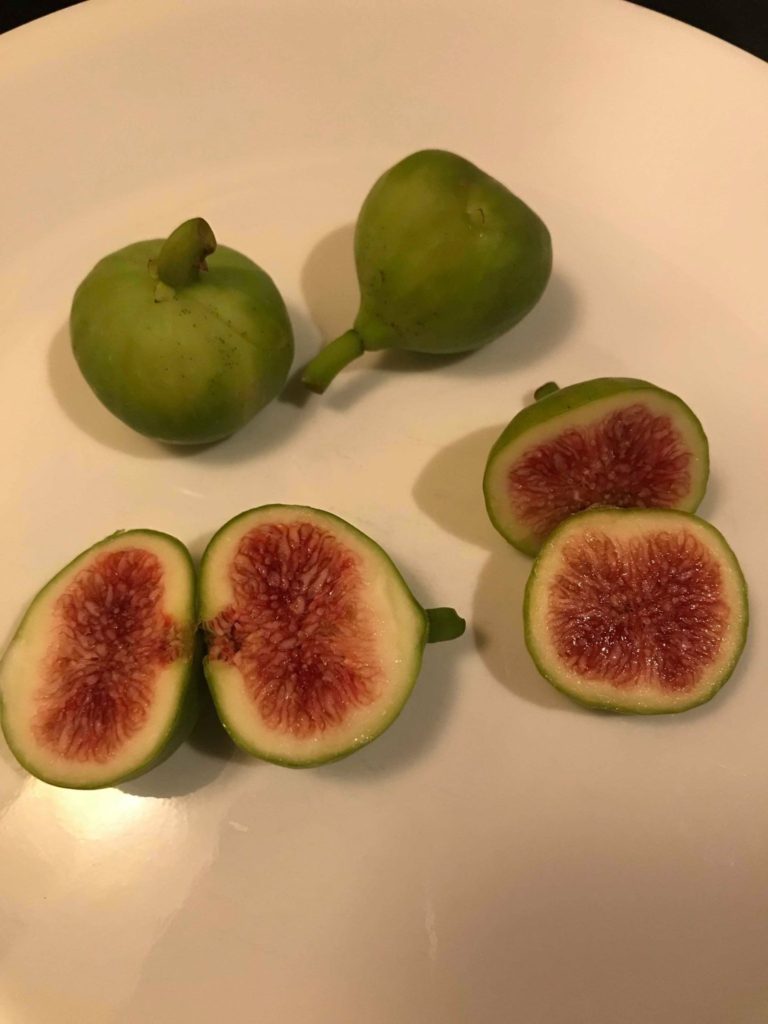
KADOTA- HONEY type
The most common green type of fig. It is thick-skinned, sweet and mild in flavor. Produces well, small to medium figs ripens to a light yellow color and is amber inside. A seedless close eyed variety, good for those concerned about fig wasp entry. Kadota produces little to no breba crop. Good for container growing.
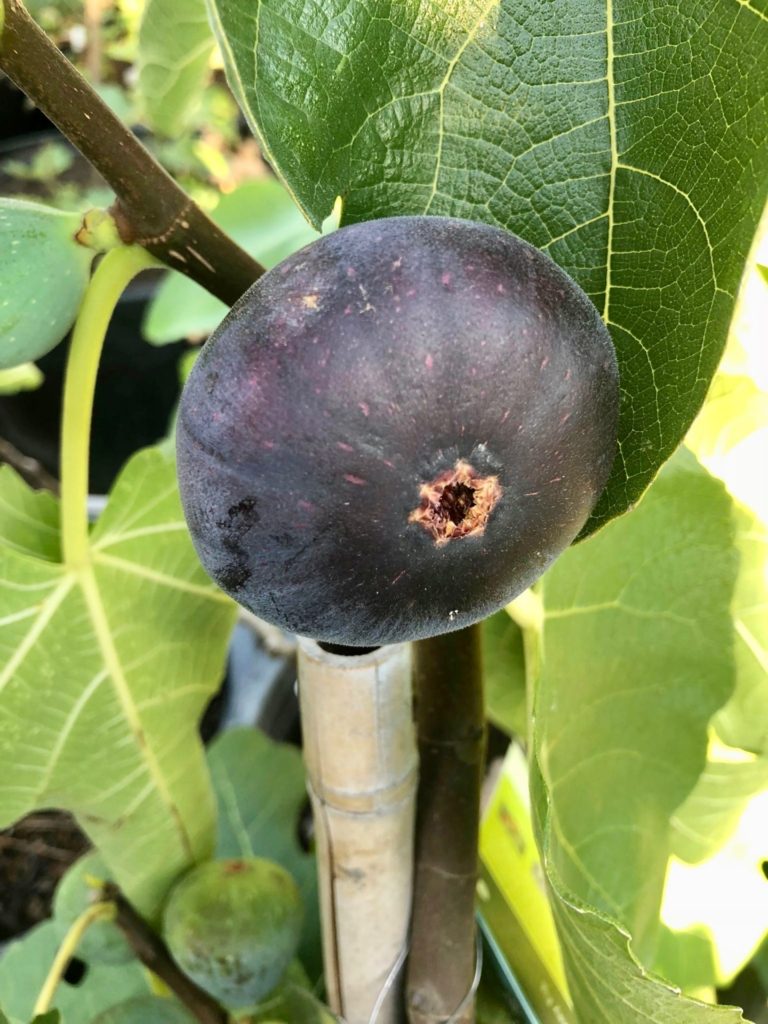
black JACK- SUGAR type
Black Jack is a semi-dwarf making it ideal for container growing. It has a purple elongated exterior with a juicy strawberry red interior. As a dwarfing variety, it tends to be a slower grower but does produce two crops of figs.
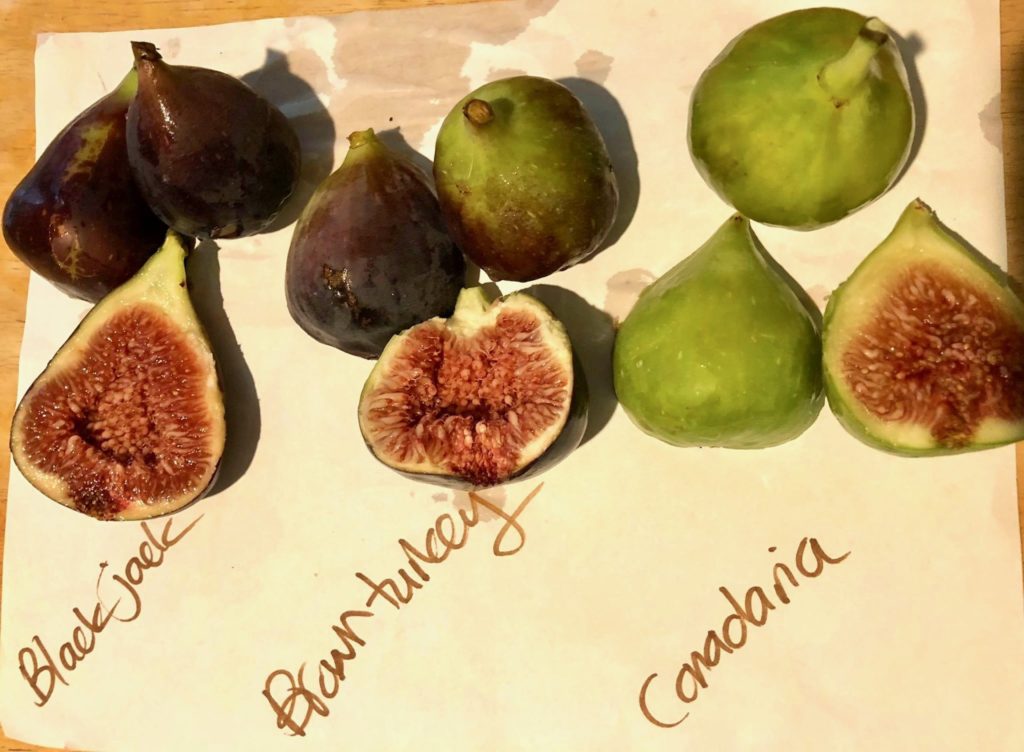
CONADRIA- BERRY TYPE
This is a large sweet fig with a light green to yellow exterior and a strawberry red interior. It is a vigorous growing tree that produces a small breba crop. It has a small eye and thin skin. It is best grown in-ground. It is considered to be the first hybrid fig and is a cross between an Adriatic and a Smyrna type.
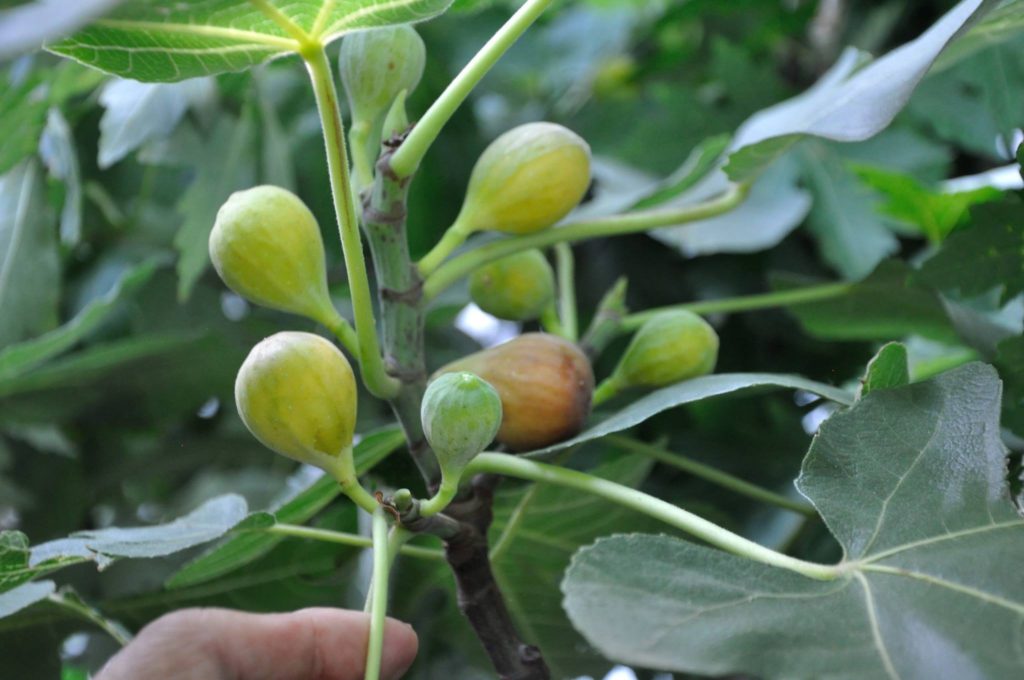
celeste- Sugar type
Celeste is often called the sugar fig because it is so sweet. It has a violet skin with a light pink or rose interior. This is also a closed eye variety and grows well in containers. It does not produce a breba crop.
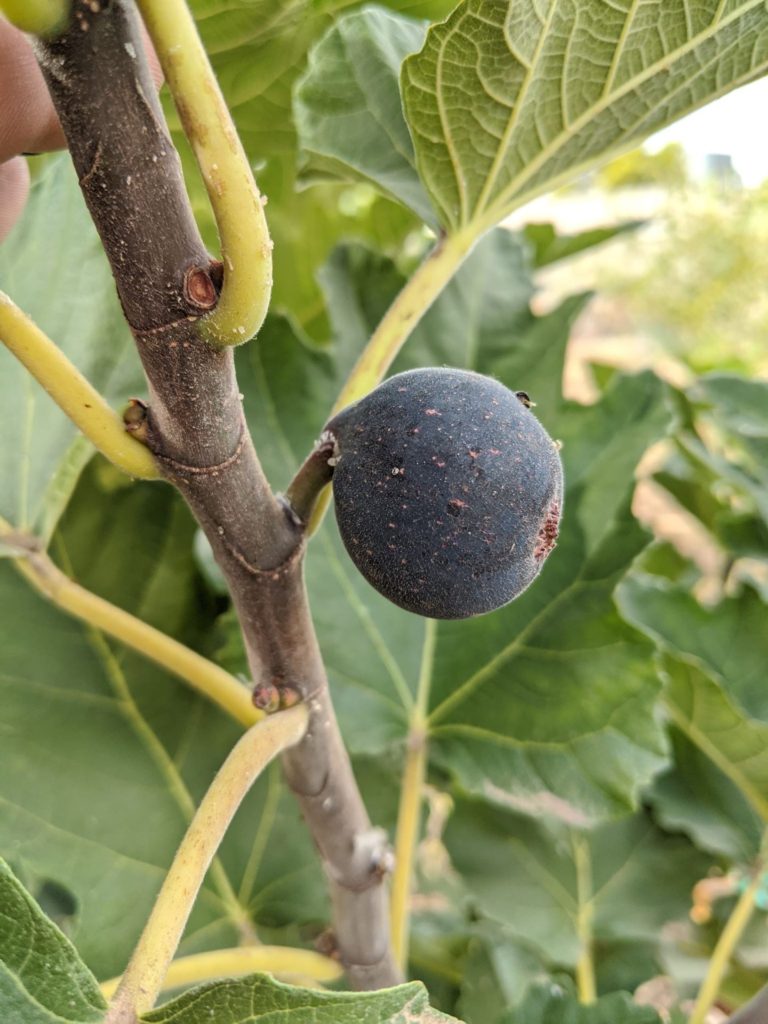
VIOLETTE DE BORDEAUX- BORDEAUX BERRY TYPE
Common Fig Violette De Bordeaux is considered to be more resinous than other berry types. It has a rich flavor and an intense figgy aroma. It is considered one of the best-tasting figs. The fruit is small to medium-sized and it does have a medium eye and is seeded. It produced a breba crop and both the main and breba crops are edible. This is a slower growing tree that is a natural dwarf. They make great container trees. Also called Negronne fig. Mountain Type.
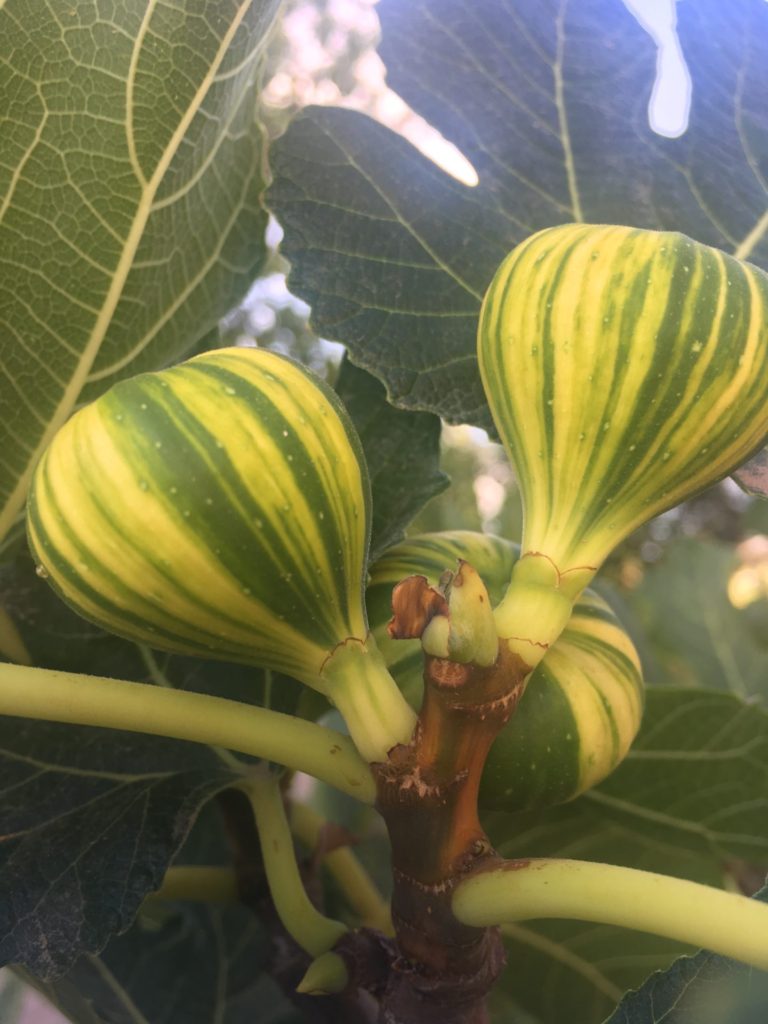
TIGER PANACHE- ADRIATIC BERRY TYPE
This is a French variety that is easy to grow and very popular especially among beginner fig growers. It is very striking and beautiful in appearance with lovely yellow and green fruit that ripen to a yellow on the outside with a bright red strawberry jam inside. It produces two crops and is a great option for container growing.
We do enjoy figs in our desert gardens.
We recommend reading Fig Growing Guide for the Low Desert
Also check out our article on making fig leaf syrup
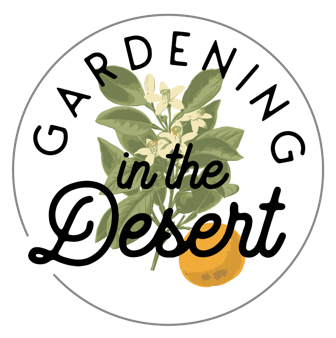
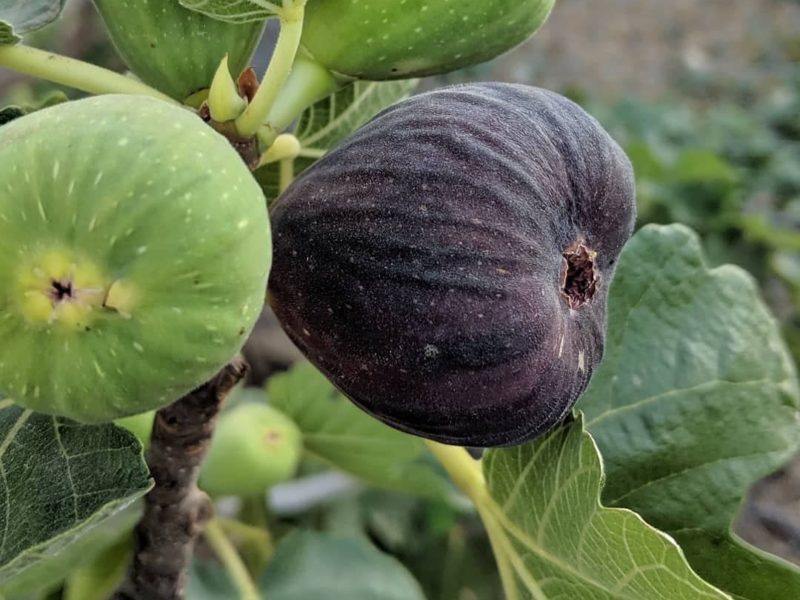
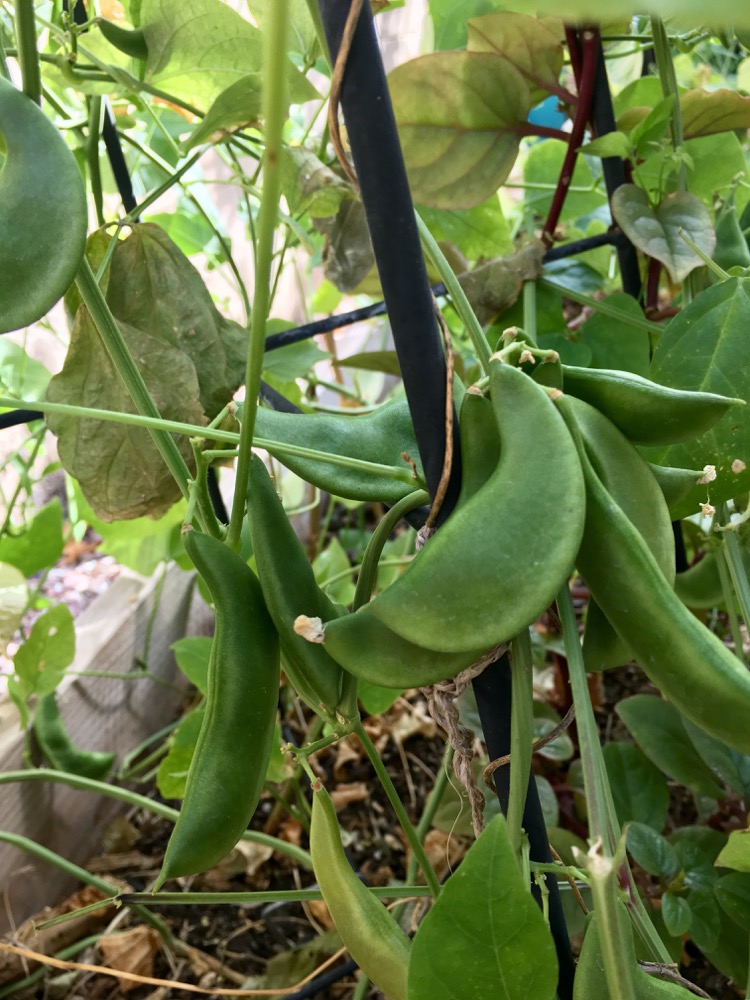

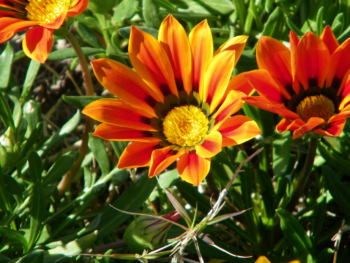
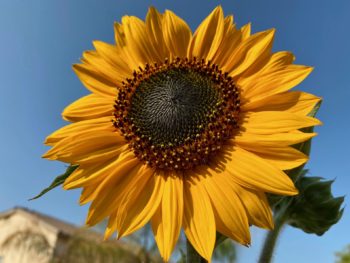
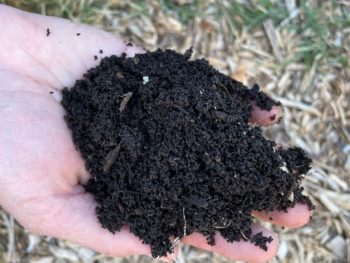
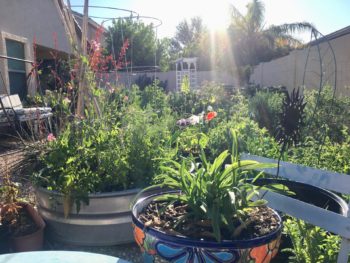

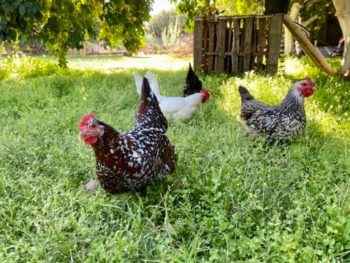
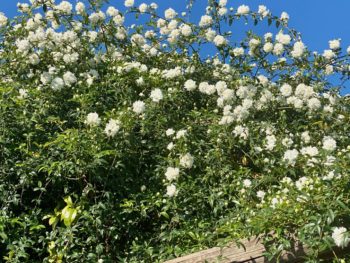
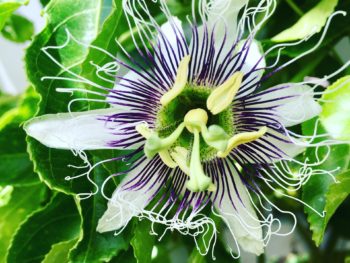
 Garden of the Month January 2020
Garden of the Month January 2020